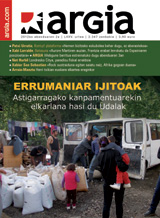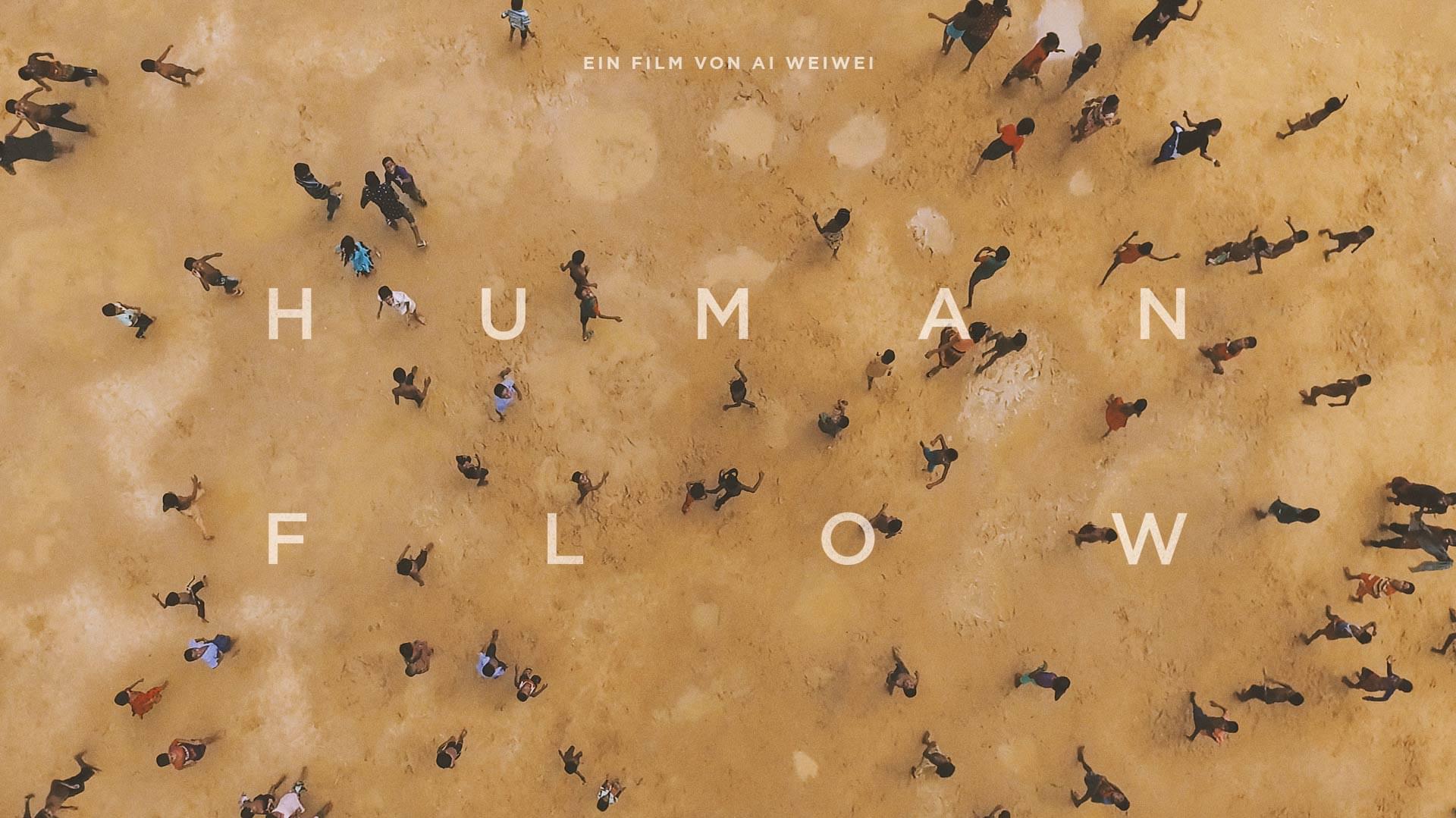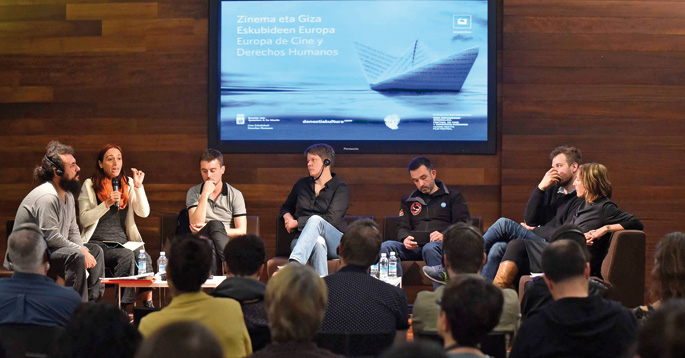The adventure of the need for communication
- Lourdes Arrieta was unable to make known his thoughts and internal needs; a congenital problem prevents him from coordinating the movements of the body and speaking. Sister Mentxu was born with the same problem, and although she has the ability to speak, she can hardly pronounce, but they have not surrendered and created a way to understand herself: Arrieta method. A documentary has just been produced on this adventure that starts from the need to communicate.
Lourdes Arrieta is writing in the air through her eyes, up, down, left and right, while Mentxu carefully reads her sister's words. In letters, years and custom have quickly shaped words and, literally, phrases. “A great powerlessness,” Mentxu returned to us. That's Lourdes' answer when we asked him what made him feel incommunicado. Internal ideas could not be expressed by Lourdes for the first sixteen years. “Put a moment on your skin, how hard it would be…” added Mentxu. We also have a second translator in class, because it's not always easy to understand Mentxu. Filmmaker Jorge Gil Munarriz has been collaborating with his sisters for three and a half years in the documentary The Arrieta method and has learned to read eye movements.
Lourdes is 56 years old, five minus Mentxu. “Until I learned to read and write, there was no complete communication,” says the younger sister. Her mother taught her how to read between hospitals and hospitals, and because of that, with the only finger she can move, Lourdes began to represent letters about her sister's body, on her thigh, on her back, on her face.
And on one day in 1979, a method was born that allowed them to communicate smoothly. They were at the Aspace Brain Disability Association, they couldn't touch each other at a certain distance, and Lourdes wanted to tell Mentxu that it was cold. His eyes moved to draw the letters in the air, until they finally got to understand each other. This is basically the Arrieta method, although it has its complexity and particularities, such as “writing” symmetrical letters inversely, as seen in the mirror. They have shown us with satisfaction the importance that the conquest of communication has had in their lives.
“Imagine, as a child, besides having no voice, taking a pencil was a very difficult action for Lourdes, and I couldn’t tell others what I thought or how it felt. It was completely isolated and the creation of the Arrieta method opened the doors to him,” says Jorge Gil. Five decades later, Arrieta's have more opportunities. The computer and the Internet have made it easier for them, and despite having mobility problems in their hands, they speak by e-mail with their friends and buy and manage their accounts on the Net. Lourdes has begun to look up, down, to the right, to the left… “Until I get husband!”, he wrote in the air. And that's that he met her husband on the Internet. Thulium.
Thulium teaches us a little table that you have on the table. It has alphabet and some loose words (cold, I want, to taste, art, perhaps, I am, thank you, how much, Tulio, please…) and it is another communication tool of Lourdes. With your finger, you will point out the letters and words on the table until you complete what you want to express.
We are not sick
What exactly is the disease you have? “We have no harm – we have been told – we have a functional diversity.” This functional diversity, among other things, prevents them from mobility, but they have stressed that it is a feature, “as all people have their own characteristics”. Even though they're being asked what their day-to-day looks like, they've got the answer ready. “At our pace, but it’s like yours. We have some needs and you will have others, what happens is that ours are visible and yours may not be seen. But there are no normal people, no one is ‘normal’, because we all have our peculiarities.”
In Independent Life Life, they struggle with other people with functional diversity for the right to autonomy. “Let others not make decisions without our participation, because we know better than anyone what happens to us and what we need,” says Mentxu. We want a dignified life.”
In this path of autonomy, communication is fundamental and therefore one of its tasks is to broaden its method so that people who have problems moving their limbs and cannot speak can use them. Mentxu explained that, although it is a simple method, people do not know it and that they offer talks to tell their experience. “Always Ahead” is the main message they convey: “Life is not to drown, ‘ay, this cannot’ and ‘that cannot’, but to move forward. If not, it's over. Humor is essential.” Mentxu is a clown in the Érase once Clown group.
Optimism is undoubtedly one of the hallmarks of the sisters' identity. Born in Zegama and Beasain, they live from a young age in Donostia and Lourdes has received us in his colorful and clear house he has in the Amara neighborhood. In the same building, her sister lives on another floor and has two alternating vigilantes. Despite her hard childhood, Mentxu has always faced life with hope after the challenge of being a doctor in psychology and, among other things, in a bookstore where she has worked selling lottery, detergent and medical devices. They have also published two poetry books. “We are very active people, we cannot be without doing anything.”
A documentary with a surreal touch
In the summer of 2009, Jorge Gil had news of the Arrieta. The Legazpiarra director saw on television a report about the sisters, drawing attention to their personal way of communicating and their attitude towards life, and made a date with them. “At first we didn’t know what form the documentary would take,” says Gil, we were getting to know each other and gradually we have been developing a personal relationship, until time has given a more concrete form to the initial idea, an approach and a concrete line, thanks to the collaboration of the three, since the sisters themselves have made many contributions.”
Result: recording of many hours in an 85-minute documentary. The hardest thing has been to put a stop to such a rich material. “We decided to focus on their day-to-day, but always from communication. That is what we have focused on, on the value of communication for the sisters, on the struggle that they still maintain to maintain that right today.” The film has an intimistic and sentimental tone, because it is counted from within: Experts have not been used to deal with the issue, since the intention has been to capture the very reality of the protagonists of them and those around them. “We have put the camera in his house and we have met his family, we have created a plot, taking advantage of Mentxu’s interest in the production of documentaries. There are moments of humor and more serious moments, because life is like this. It’s a project we’ve all done with good will, and I think the film has that energy.”
Mentxu has underlined that it has a surreal touch. “Yes, there are surreal moments, because the sisters tend to surrealism…”, “you too”, “yes, it’s true, I too”. There is talk of the confidence they have placed in their three years of relationship and the younger sister has added that the director is one more of the family. It has been a very fun experience, with laughter and tears, in which Lourdes has told, through gestures, that they have done everything. “To make a documentary like this one is necessary the implication,” says Gil; personally it has been a special adventure that does not offer you fiction. For me it has been the first job of this kind, gender is not easy and I have many fears and doubts, because nobody has seen it yet, when the public sees it I will really calm down.” The Arrieta method is in the post-production phase and production company Moriarti will release it in 2013: The intention is to take it first to an international festival and then bring it to the Basque Country.
What will the documentary provide? Lourdes and Mentxu make it clear: If it serves to extend the Arrieta method, it will not be a little. In the words of the director, one of the motivations of the film is to contribute to this dissemination: “The objective is that knowledge of this method be as many people as possible, so that whoever benefits and helps him can use it.”
Teaser of the documentary:
Sari nagusia, Ikusleen Saria, lortu du Chiara Andrich eta Giovanni Pellegrini italiarren Bring the Sun Home dokumentalak, Donostiako Giza Eskubideen XIII. Zinemaldian.


















